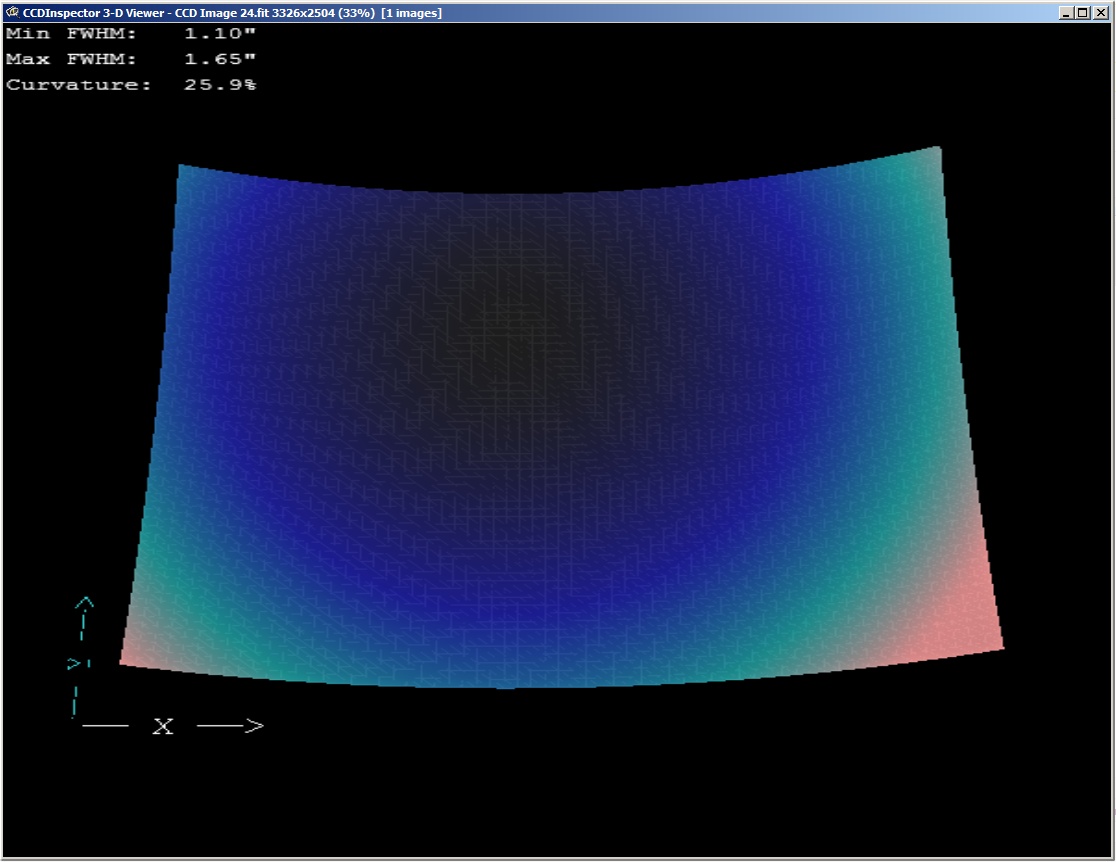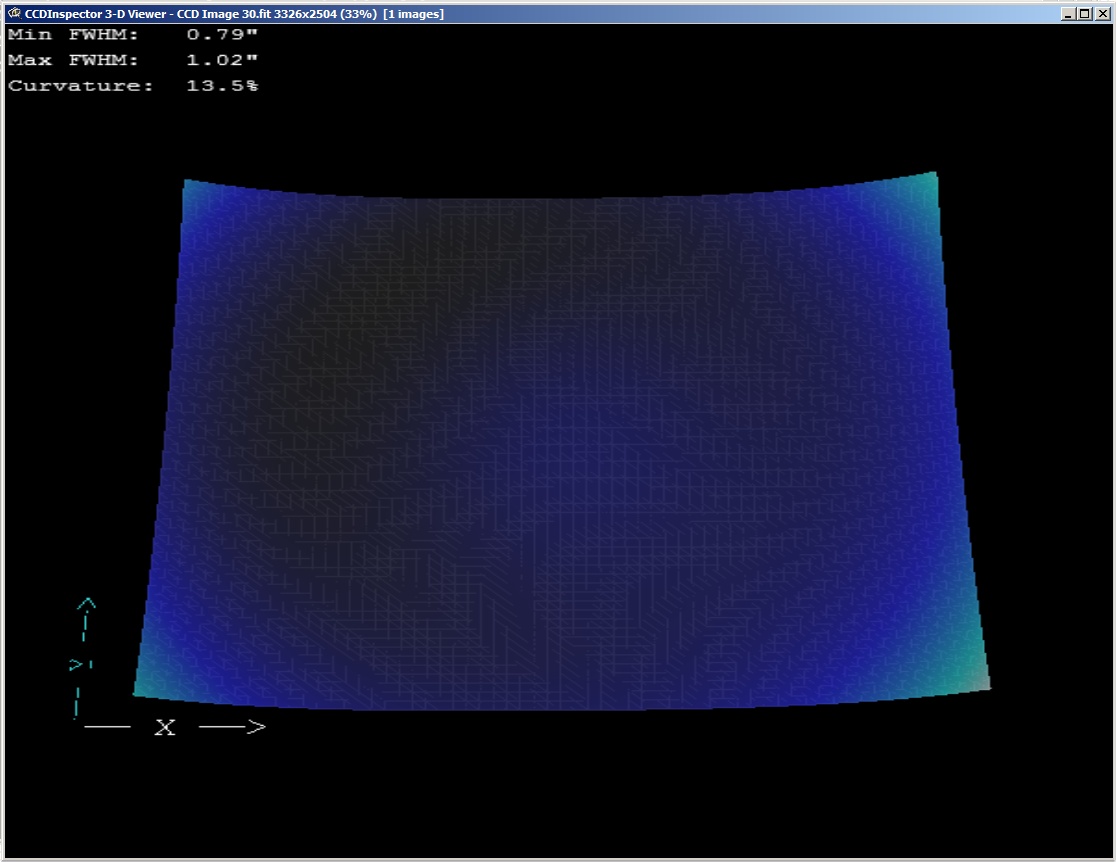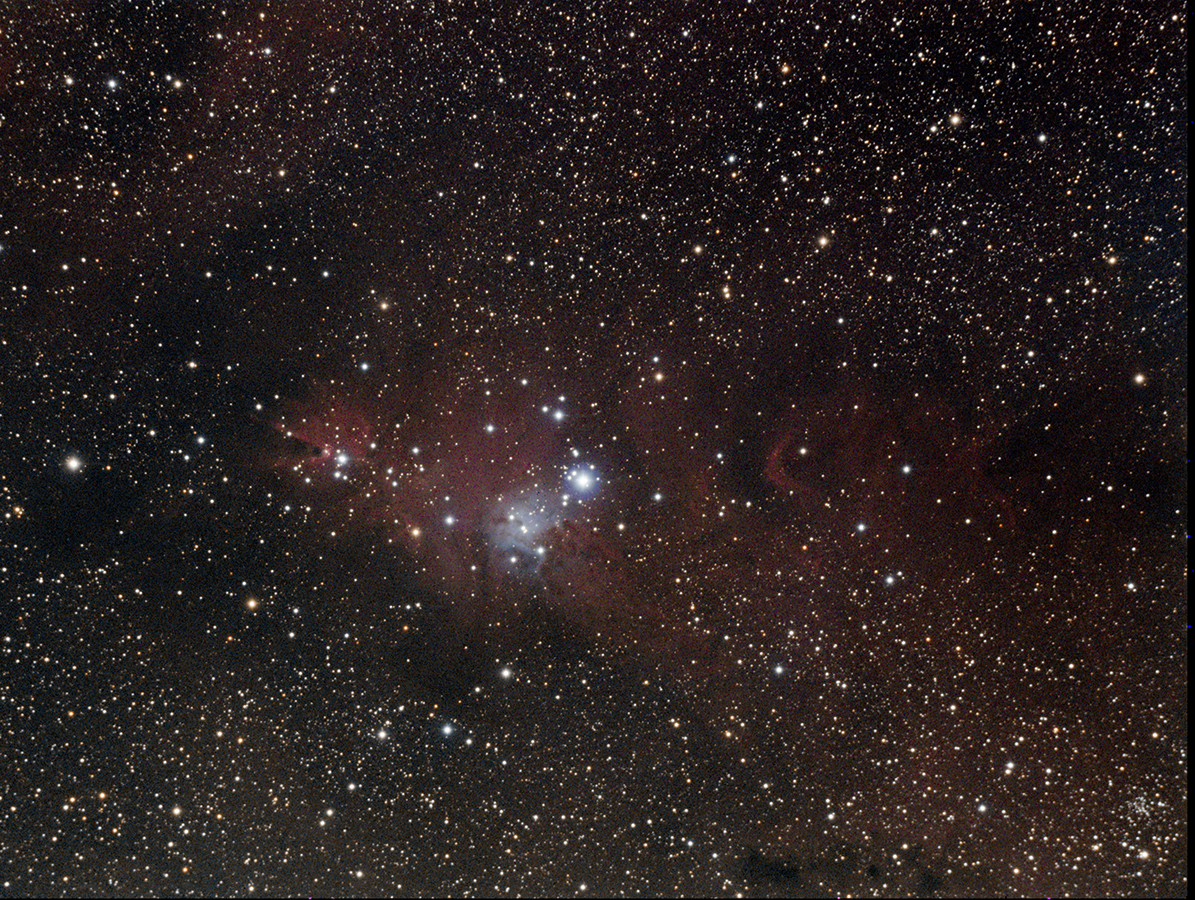Here’s the new Orion ED80T CF triplet refractor with the dew-shield fully extended, and the MoonLite CF focuser attached. The stock focuser on this scope is quite good, and sturdy, but I’ve become a fan of MoonLite’s stuff, so I sent the scope to Ron@MoonLite, he patterned and machined a custom flange for it and sent everything back. The focuser is rock solid and dead center (see the CCD Inspector 3D jpegs below). It comes with an interesting feature – a shaft lock, which is a small thumbscrew on the left side, which clamps down on the crayford shaft. Works amazing. I had gotten focus to where I wanted it in Maxim DL, and then tightened the screw, and voila, no shift, or change of focus. The tube is carbon fiber, the lens cover is metal and screw-on, which is a real nice addition. The dew-shield locks in place with a thumbscrew/compression ring, another nice feature.
Here’s a bit of a close-up of the MoonLite CF.
And with the 4.5″ drawtube extended almost all the way.
And with the dew-shield fully retracted.
It comes with a pretty nice 2″ diagonal. I’m not using this, as this is an imaging-only scope.
Here’s the scope with my imaging equipment inserted. 2″ Astro-Tech ATFF field flattener, Orion Nautilus motorized filtered wheel (and 2″ LRGB filter set), and the Parsec 8300M CCD camera.
Another shot. This where I guessed focus might be and I was very close. About 1.5″ of travel outwards and I had focus.
So, onto performance. I mounted the scope on the right side of an ADM side-by-side setup. Both the saddles in this SBS setup and dual Losmandy and Vixen so I can use any scope, on either side. The main plate is a thick Losmandy. I counterweighted the front of the scope with an additional ADM Vixen rail up front with a couple Vixen saddles tightened to it as the scope is very camera heavy as is and I needed more weight on the front of the scope/bar. With my Orion ShortTube 80 and Star Shoot Auto Guider on the left side of the SBS plate, I mounted it onto the CGE-Pro, and was off to image. (I had already gotten rough focus just holding the scope in my hand with the camera shooting 1s exposures).
I didn’t realize it, but I didn’t have the camera/field flattener fully square/orthogonal to the scope initially, and you can tell by this CCD Inspector shot.
*After* I shot my test image I thought I’d play with the flattener/camera fitting in the focuser drawtube, and saw it was slightly askew. After a quick adjustment while aimed into a starry section of sky I shot another 120s test and got this:
It doesn’t get much better than that. So, next time I’ll check the camera being square *before* I shoot like I usually do.
Here’s a test image of NGC2264. Nothing special here at all. 3×8 mins LRGB each, plus darks. -20C on the Parsec 8300M, guiding was average to below average. Focus is a little soft, as I spent all of 2 minutes getting focus, and I didn’t refocus between filters. Also, the camera was *not* square/orthogonal to the scope as previously mentioned, which I didn’t notice until after the imaging run.










